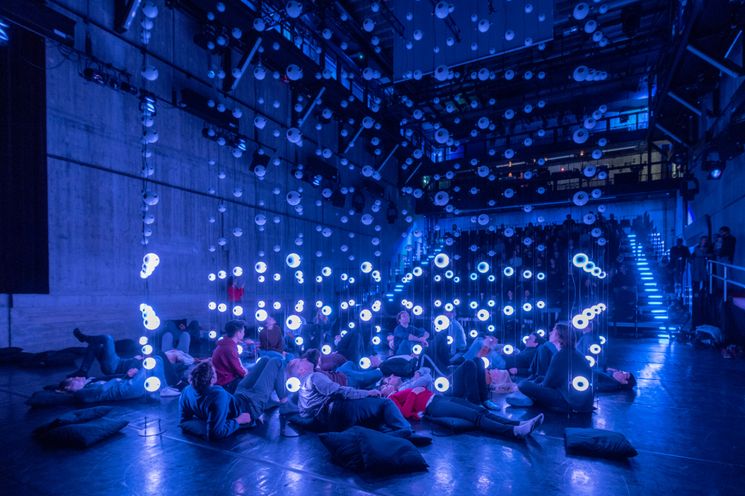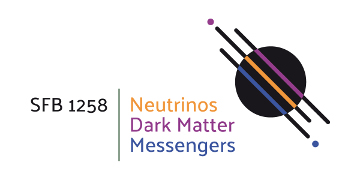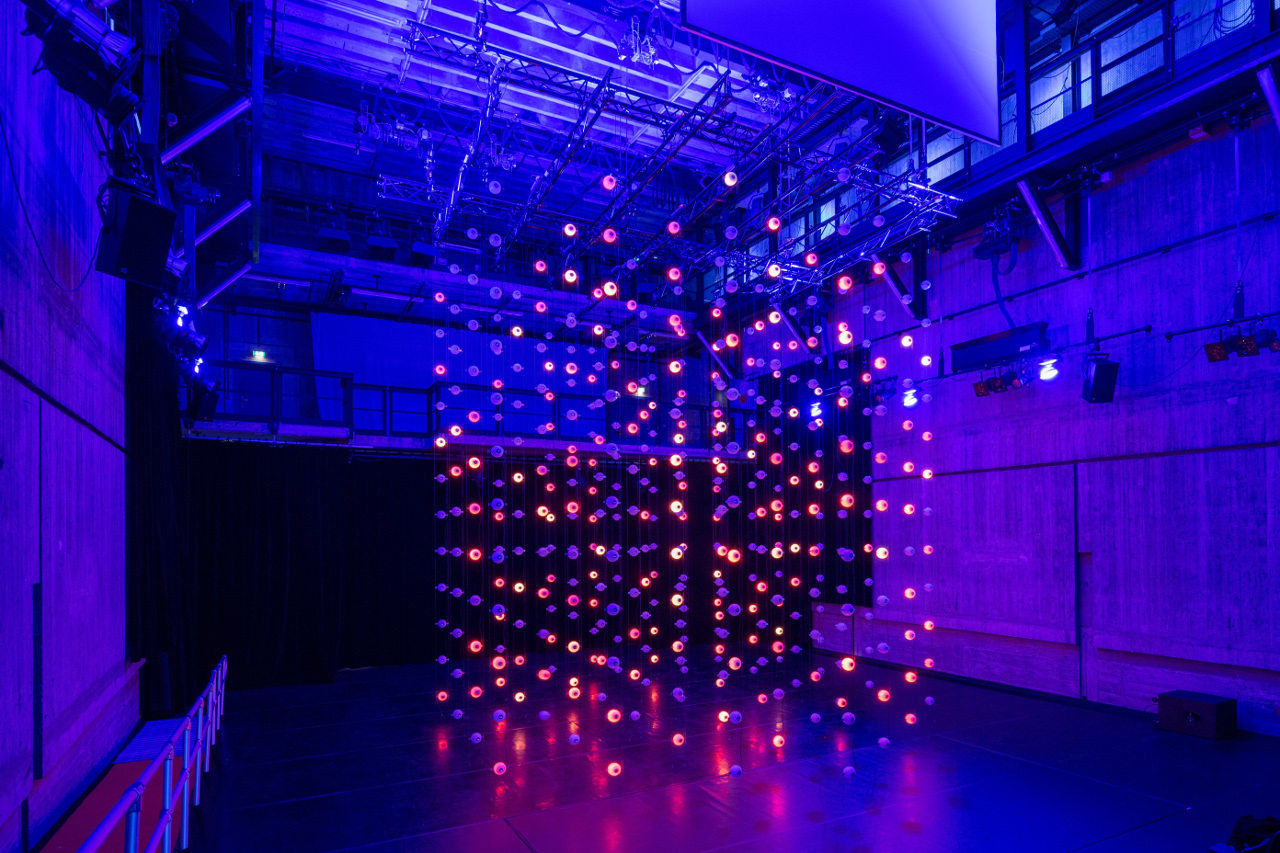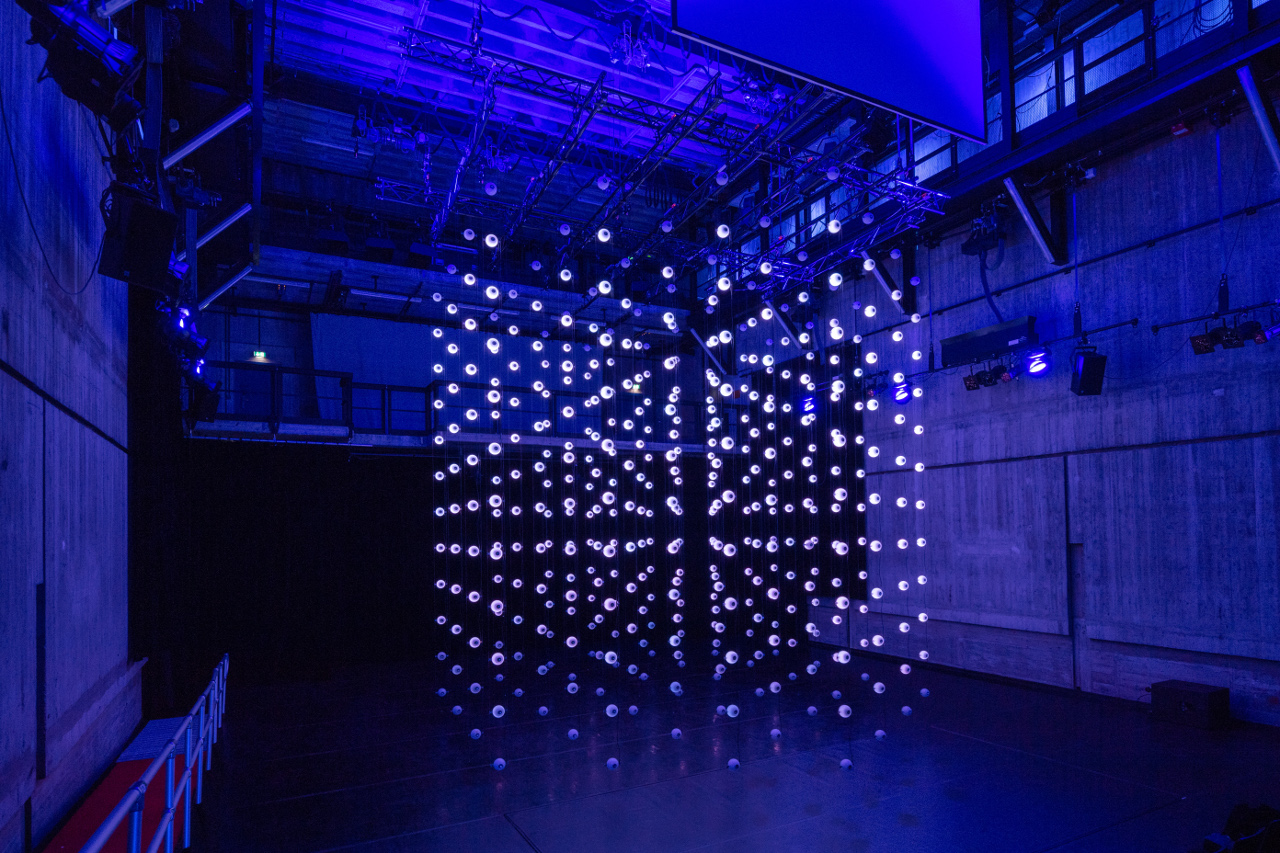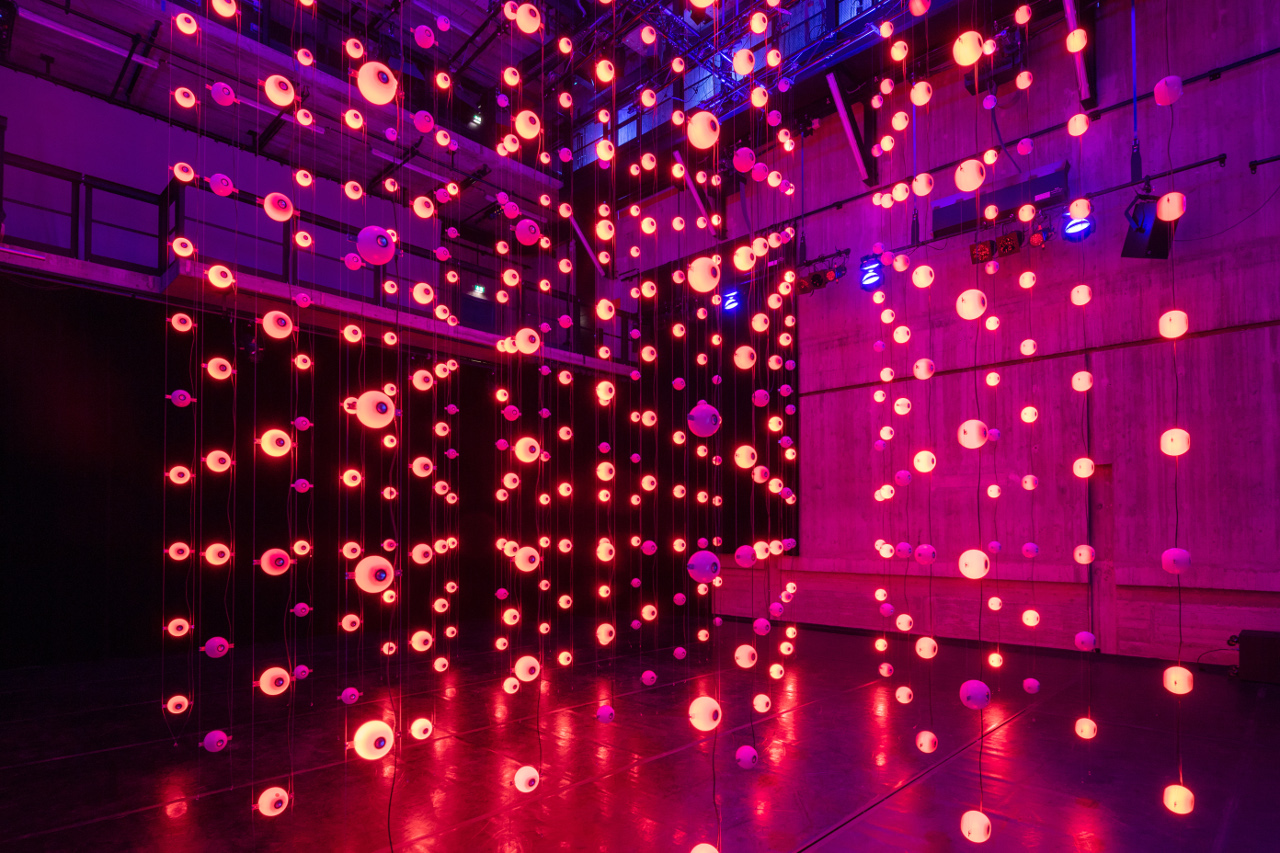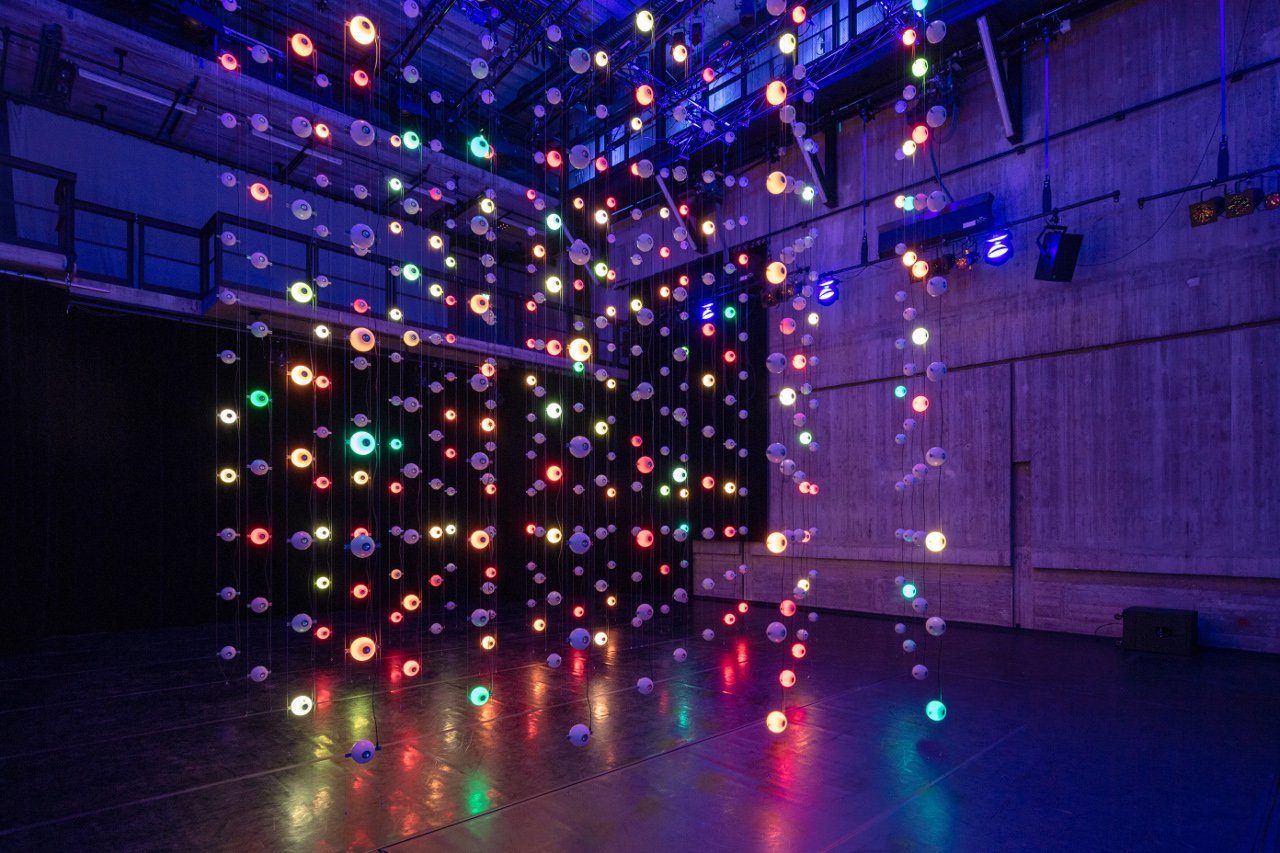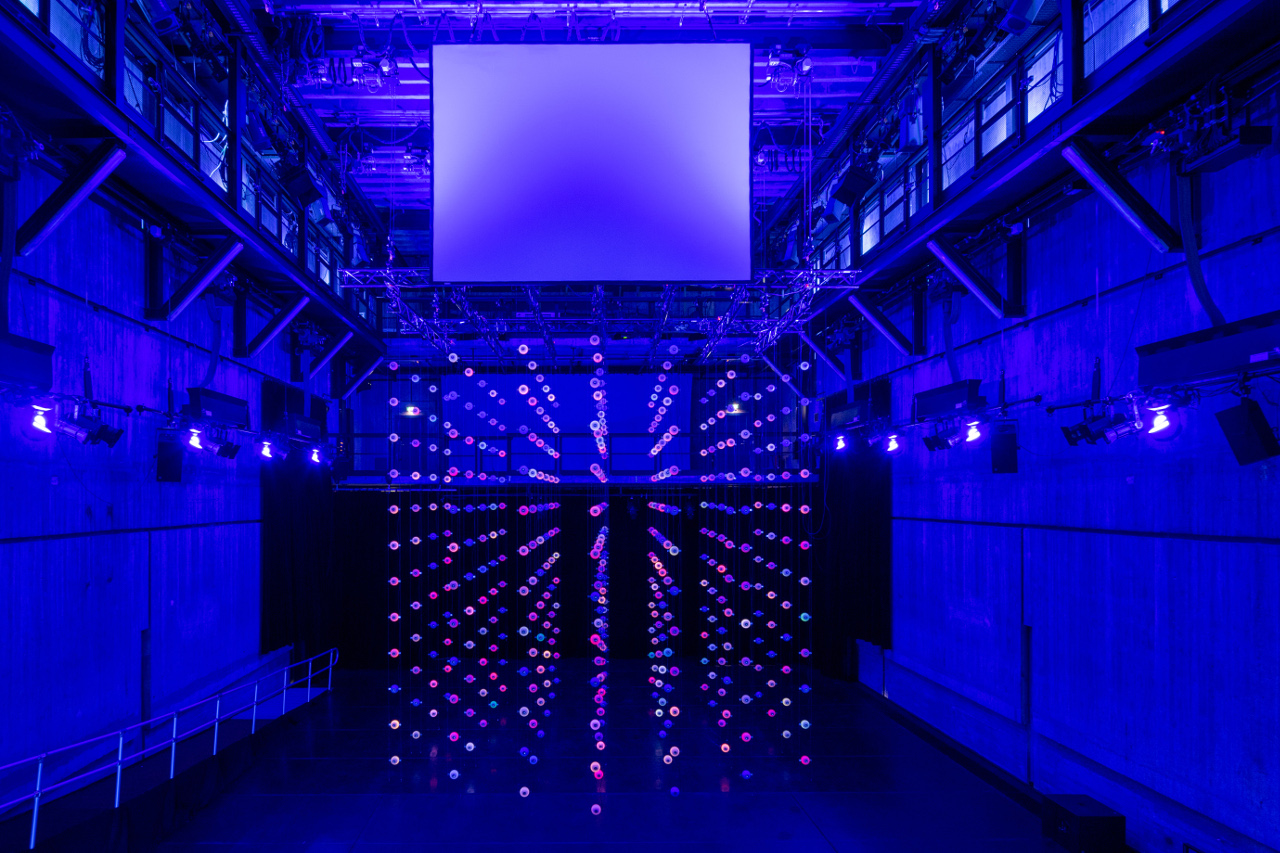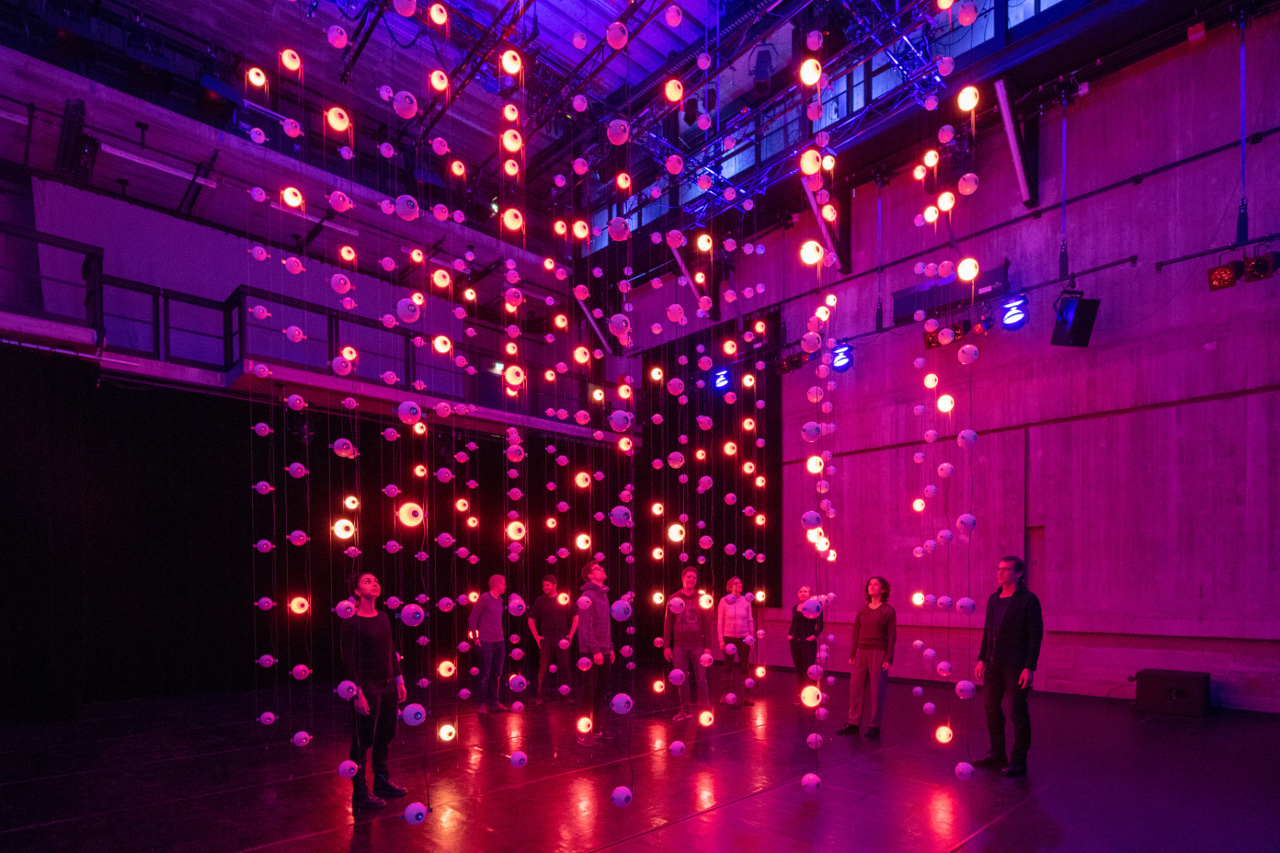SFB1258 & Tim Otto Roth: AIS3 [aiskju:b] at Reaktorhalle Munich (2019)
The AIS3 [aiskju:b] intallation by Tim Otto Roth in the Reaktorhalle in February 2019. (Photos: Andreas Heddergott)
The IceCube Neutrino Observatory is the world's biggest Neutrino detector, but no one can see it: The 86 strings with its 5600 optical modules are spanning up a volume of one cubic kilometer, invisibly melted into the Antarctic ice.
Thus, from the time the conceptual artist Tim Otto Roth and Christian Spiering from DESY Zeuthen, former spokesperson of the IceCube Collaboration, met for the first time, they were hankering to work on a Neutrino detector installation.
For the first time, the culmination of their collaborative work was presented in the empty space of the St. Elisabeth church in Berlin from 28 August 2018. The Astroparticle Immersive Synthesizer (AIS3) or [aiskju:b] is not only a huge piece of art, but also a sound laboratory and an experiment in psychoacoustics.
Four hundred fourty-four spheres housing loudspeakers and LEDs fill up an almost cubic space of 8 x 8 x 7 meters, distributed along 37 vertical strings, thus reproducing at small scale the structure of the IceCube Neutrino Observatory. With this installation, Tim Otto Roth has created an immersive experience that delves into the invisible nature of neutrinos, but also of offers an allegorical visit to IceCube.
The loudspeakers contain lights, which turn on in patterns that reflect an approximation of IceCube data. Sometimes the light starts in the center of the installation, other times it crosses the room. But these patterns, which represent light detected in IceCube as relativistic particles cross the neutrino detector, are also used to turn the space into a synthesizer, with sounds that change depending on the amount of energy represented and the distance from one acoustic source to another.
Visitors can move freely around and within the installation, developing a unique perspective on astrophysical neutrinos. Light and sound complement each other, providing an intense experience of IceCube data.
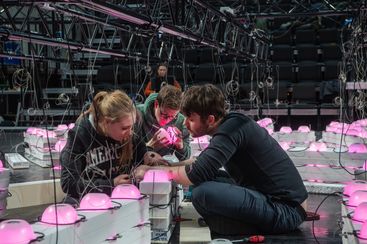
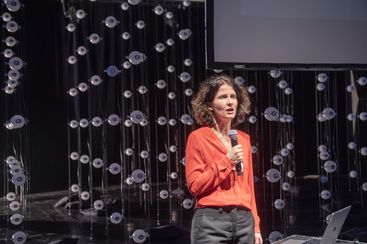
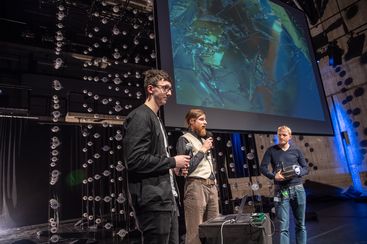
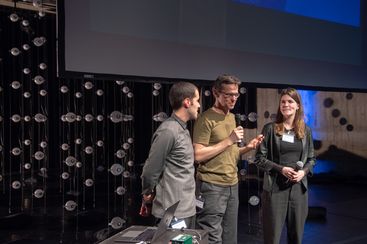
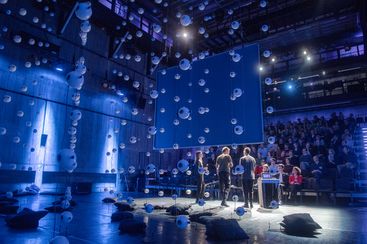
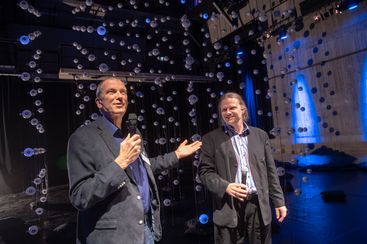
On the weekend of 9/10 February 2019 the SFB1258 presented the AIS3 [aiskju:b] artwork in the Reaktorhalle in Munich. The Reaktorhalle is an impressive performance venue run by the Hochschule für Musik und Theater München, the building was originally built in the 1950s as Institute of Technical Physics for TUM.
Five transport boxes weighing 1.5 tons and containing the strings and traverses of AIS3 [aiskju:b] were delivered to Munich on 6 February and were assembled the following day by a team of students of the RWTH Aachen and the SFB1258 lead by Tim Otto Roth.
As the 2019 General Meeting highlight, the SFB1258 members as well as invited guests celebrated the opening of the AIS3 [aiskju: b] exhibition on 8 February 2019. Prof. Elisa Resconi, spokeswoman of the SFB1258, welcomed the guests and gave an overview of the current projects of the SFB1258 in the field of art and public relations. Then, the artists Jol Thomson, London, and Diogo da Cruz, Academy of Fine Arts Munich, as well as Prof. Stefan Schönert, TUM, and students of the SFB1258 and the Academy of Fine Arts Munich, presented their projects in more detail. Finally, Dr. Christian Spiering and Dr. Tim Otto Roth switched on the light and sound of AIS3 [aiskju:b] for the first time in the Reaktorhalle.
On Saturday and Sunday, 9 and 10 of February 2019, the Reaktorhalle was open for public from 10 am to 8 pm each day. During the two days, an overwhelming number of 1500 people came to enjoy the immersive experience of AIS3 [aiskju:b] that has also been announced by Süddeutsche Zeitung and Deutschlandfunk Kultur.
The exhibition weekend was completed by a school program for 10th graders on Monday, 11 February 2019, with talks on aspects of modern cosmology by Prof. Susanne Mertens and the PhD students Julia Sawatzki and Angelina Kinast. 250 students from the Theresa-Gerhardinger-Gymnasium, Wittelsbacher Gymnasium, Luisengymnasium and Oskar-von-Miller-Gymnasium attended the program.
The AIS3 [aiskju:b] installation was again on display at Ludwig Forum Aachen from 6 September to 11 November 2019.
